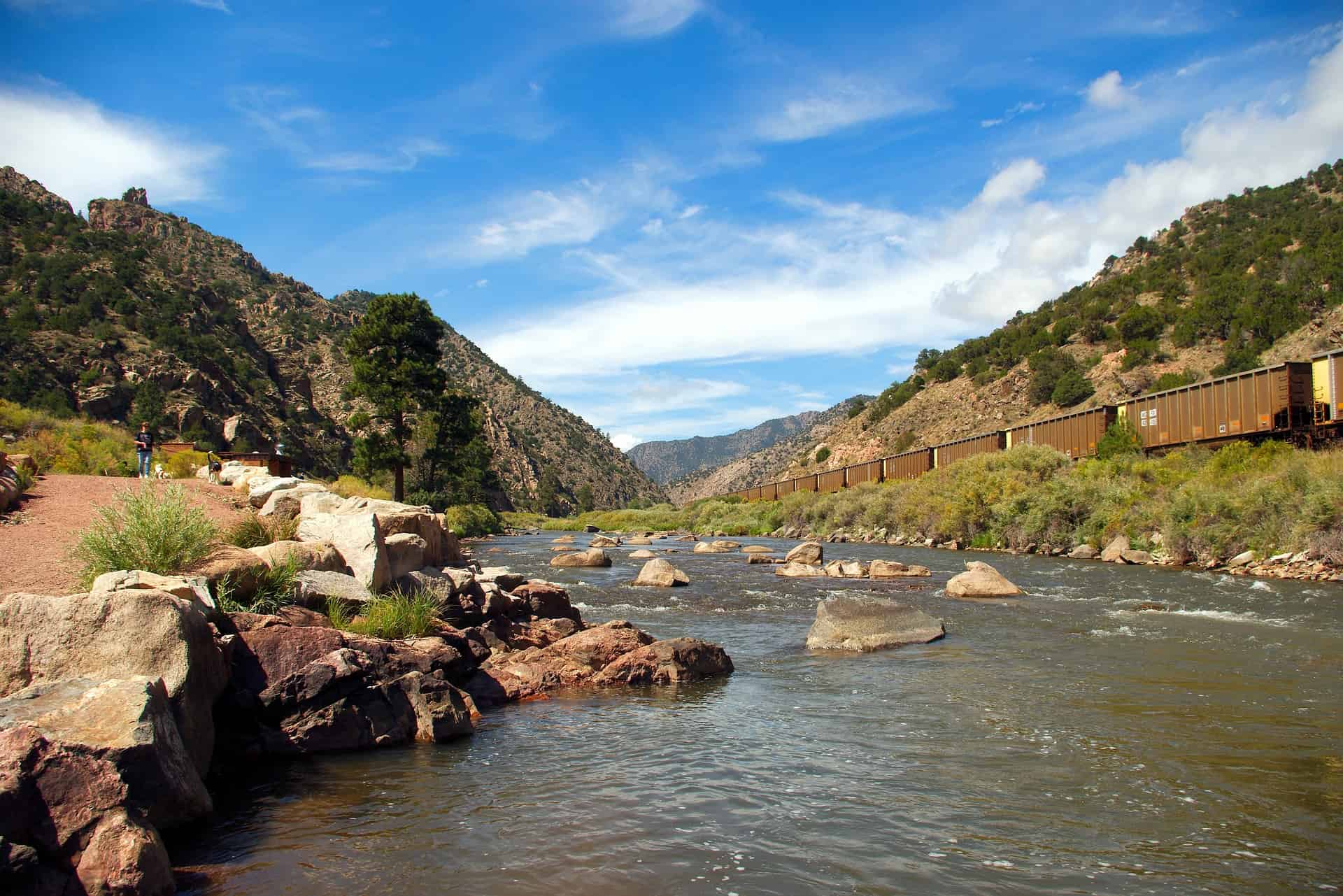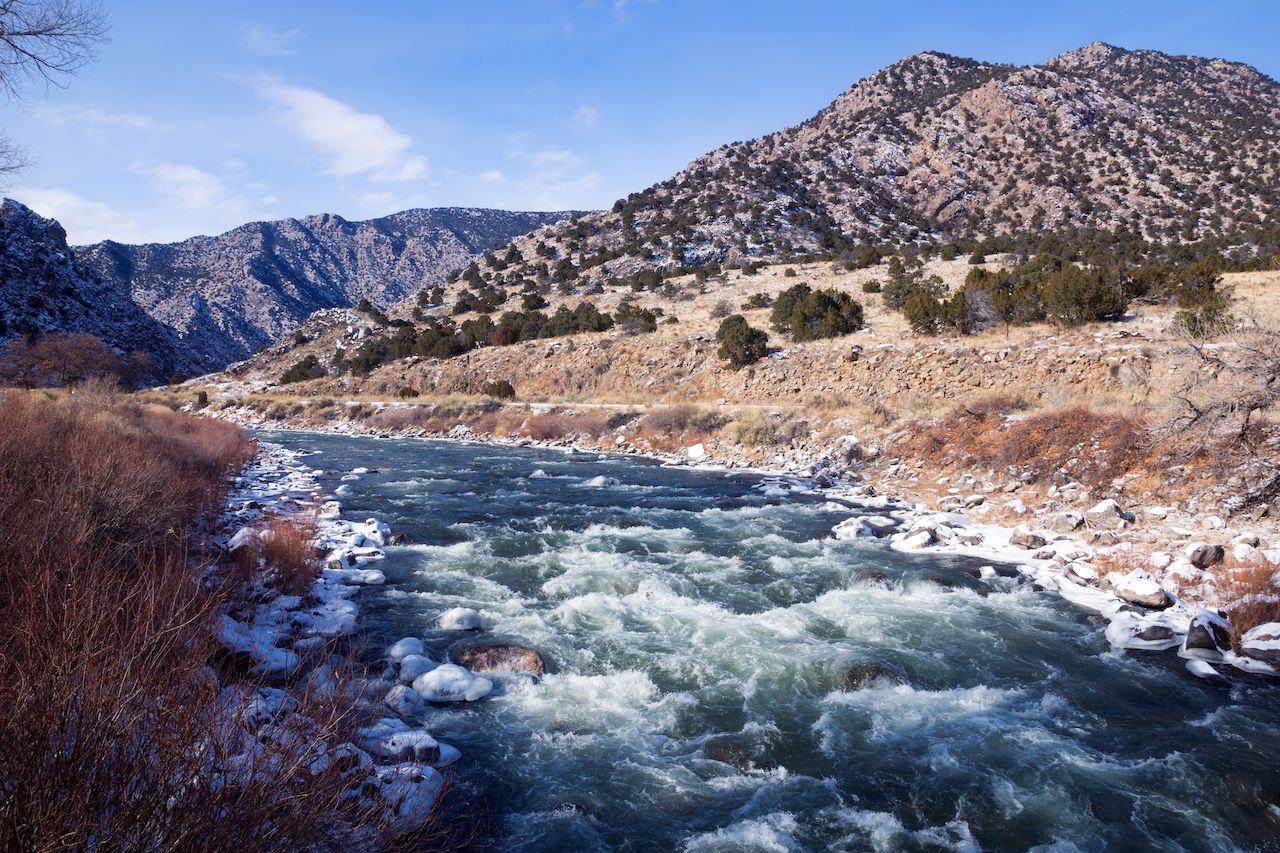
America’s Liquid Legend: The Arkansas River’s Enduring Tales
From the snow-capped peaks of the Colorado Rockies, a thin ribbon of snowmelt begins an epic journey, carving its way through plains, forests, and swamps, eventually merging with the mighty Mississippi. This is the Arkansas River, a waterway stretching nearly 1,469 miles across the heart of America, a silent witness to millennia of human drama. More than just a geographical feature, the Arkansas River is a liquid legend, its currents carrying not only water but also the echoes of ancient myths, the whispers of pioneering daring, and the enduring spirit of a nation forged by its waterways. To traverse its length, even in imagination, is to embark on a journalistic expedition into the very soul of American folklore.
The river’s story begins long before the arrival of European explorers, steeped in the cosmology of the Indigenous peoples who first called its fertile banks home. For tribes like the Osage, Wichita, Caddo, and Quapaw – from whom the river’s name itself is derived, meaning roughly "people of the downstream" – the Arkansas was more than a resource; it was a sacred artery, a source of life, and a canvas for creation myths. The Osage, for instance, tell of their ancestors descending from the sky, landing near the river, and learning to live in harmony with its rhythms. The river spirit, often depicted as a benevolent or sometimes fearsome entity, was believed to govern its waters, demanding respect and offerings. Legends of giant fish, monstrous turtles, or ethereal water spirits guarding hidden treasures or sacred sites were commonplace, serving as both cautionary tales and expressions of deep spiritual connection. These stories, passed down through generations around flickering campfires, imbued the river with a profound sense of personality and power, long before maps delineated its course.
With the dawn of European exploration, the Arkansas River entered a new chapter of legendary narratives, intertwined with the quest for empire and untold riches. Francisco Vázquez de Coronado, the Spanish conquistador, was arguably the first European to encounter the river in 1541, venturing onto the vast plains in search of the mythical Seven Cities of Cíbola and the golden kingdom of Quivira. Though he found no gold, his expedition brought the river into the European consciousness, a vast, untamed barrier and pathway through an unknown land. His chronicles, filled with accounts of immense buffalo herds and encounters with indigenous tribes, painted the river as a gateway to a land of both promise and peril, fueling the imagination of future adventurers.

Centuries later, American explorers and pioneers inherited these legends and began creating their own. Meriwether Lewis and William Clark, though primarily focused on the Missouri, understood the Arkansas’s strategic importance, and subsequent expeditions, like that of Zebulon Pike in 1806, would meticulously map its upper reaches. Pike, mistaking a distant peak for a cloud, famously declared that no man could ever ascend it, giving rise to the legend of Pike’s Peak, an iconic landmark that defied his initial assessment. His description of the vast prairies, "a dreary and barren waste," belied the hidden wonders and future prosperity that the river would unlock, yet his arduous journey solidified the Arkansas as a symbol of the American frontier’s formidable challenges.
The 19th century transformed the Arkansas into a bustling highway for commerce and conquest, a period ripe for the birth of new legends. Steamboats, those majestic, smoke-belching leviathans, plied its waters, connecting isolated frontier settlements and carrying everything from cotton and timber to hopeful prospectors and desperate outlaws. The dangers were immense: shifting sandbars, submerged snags, boiler explosions, and the ever-present threat of floods. Each wrecked steamboat, swallowed by the river’s murky depths, became a potential site for legends of buried treasure, ghostly crews, or spectral vessels appearing on foggy nights. The tales of steamboat captains, their skill and daring pitted against the river’s unpredictable temperament, became the stuff of local lore, celebrating human ingenuity and resilience.
This era also saw the Arkansas River become a backdrop for the legends of the American West’s most notorious figures. Outlaws like Jesse James and the Younger Brothers, often on the run from the law, used the river’s dense riparian forests and winding tributaries as escape routes and hiding places. Stories of their daring exploits, their buried loot, or their narrow escapes from tenacious marshals often feature the river as a key accomplice or adversary. The river banks witnessed skirmishes between cowboys and Native Americans, the clatter of wagon trains, and the grim realities of the Civil War, leaving behind a rich tapestry of ghost stories, lost battlefields, and tales of extraordinary courage and sacrifice.
One particularly fascinating legend, though often disputed, speaks of a lost Spanish mine, rumored to be somewhere along the Arkansas in Oklahoma or Arkansas, containing untold quantities of silver or gold. Passed down through generations, often by Native American elders or early settlers, these tales fueled countless treasure hunts, none definitively successful, but all adding to the river’s mystique as a keeper of secrets. The allure of the unknown, the promise of quick riches, transformed the river from a mere waterway into a map leading to potential fortune, a legend that continues to tantalize to this day.
As America moved into the 20th century, the Arkansas River underwent its most profound transformation, a testament to human engineering and a new kind of legendary ambition. The construction of massive dams, most notably as part of the McClellan-Kerr Arkansas River Navigation System completed in 1971, tamed its wild currents, creating a navigable channel for barge traffic deep into the heartland and providing flood control and hydroelectric power. While these feats of engineering brought prosperity and safety, they also submerged old landscapes, quieted some of the river’s wilder legends, and created new ones. Stories emerged of towns swallowed by reservoirs, of ancient burial grounds now lying beneath placid waters, and of the river’s changing personality – from a tempestuous force to a managed resource.
Yet, even in its tamed state, the Arkansas River continues to inspire and hold sway over the American imagination. Local legends persist: the "Arkansas Traveler," a folksy tale of a lost musician and his witty encounter with a squatter, embodies the river’s spirit of hospitality and self-reliance. Haunted bridges, spectral lights on the water, and mysterious creatures glimpsed in the deep eddies continue to be reported, particularly in the more remote stretches. The annual canoe races, fishing tournaments, and recreational activities along its banks foster a new generation of river enthusiasts, each creating their own personal legends of adventure and connection to this enduring waterway.
In a journalistic sense, the Arkansas River is a living document, its currents constantly rewriting the narrative of American history and folklore. It reminds us that legends are not merely relics of the past but dynamic entities, evolving with each generation’s experience and interaction with the landscape. From the sacred narratives of the Osage to the daring exploits of steamboat captains and the modern engineering marvels, the river embodies the American spirit of exploration, resilience, and an enduring fascination with the unknown.
To stand on its banks today, whether in the shadow of the Rockies, amidst the bustling cities of Wichita or Tulsa, or deep in the cypress swamps of Arkansas, is to feel the weight of these stories. The wind whispers through the cottonwoods, the water murmurs over ancient stones, and if one listens closely enough, one can still hear the echoes of the Arkansas River’s liquid legends – a timeless testament to the power of place and the human imagination that forever binds us to the land and its life-giving waters. The Arkansas River is not merely a geographic feature; it is an enduring character in the grand, unfolding epic of America.



